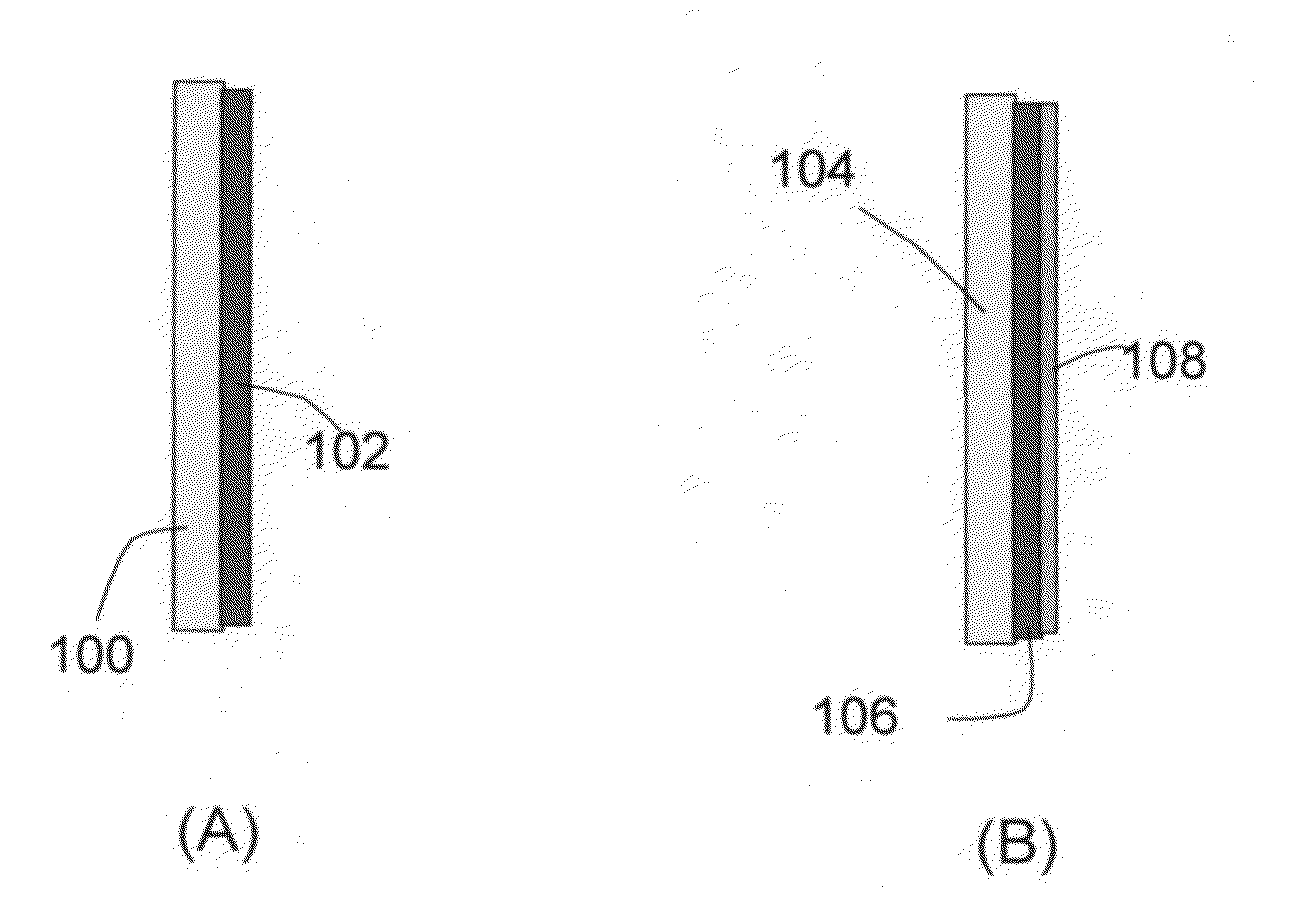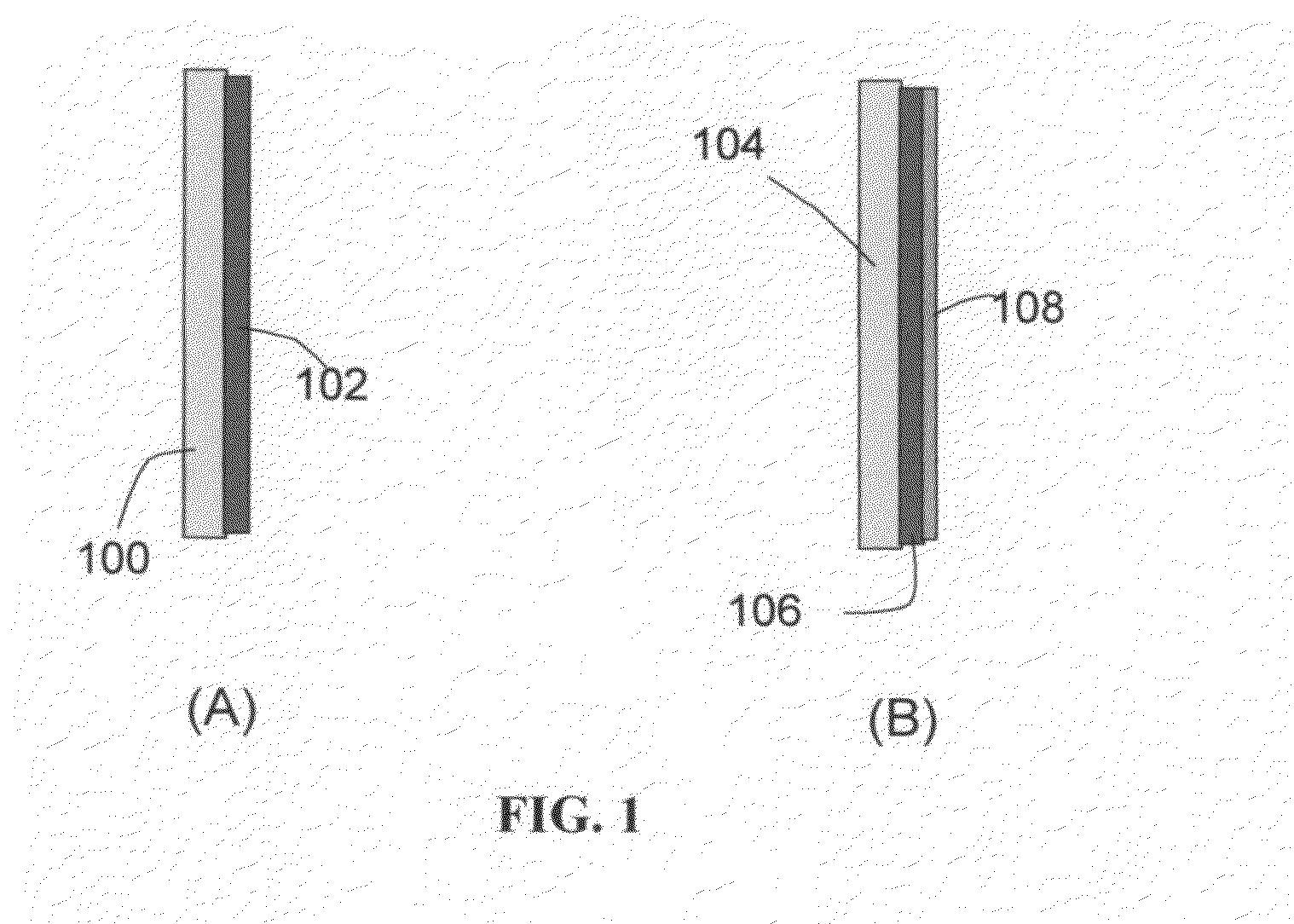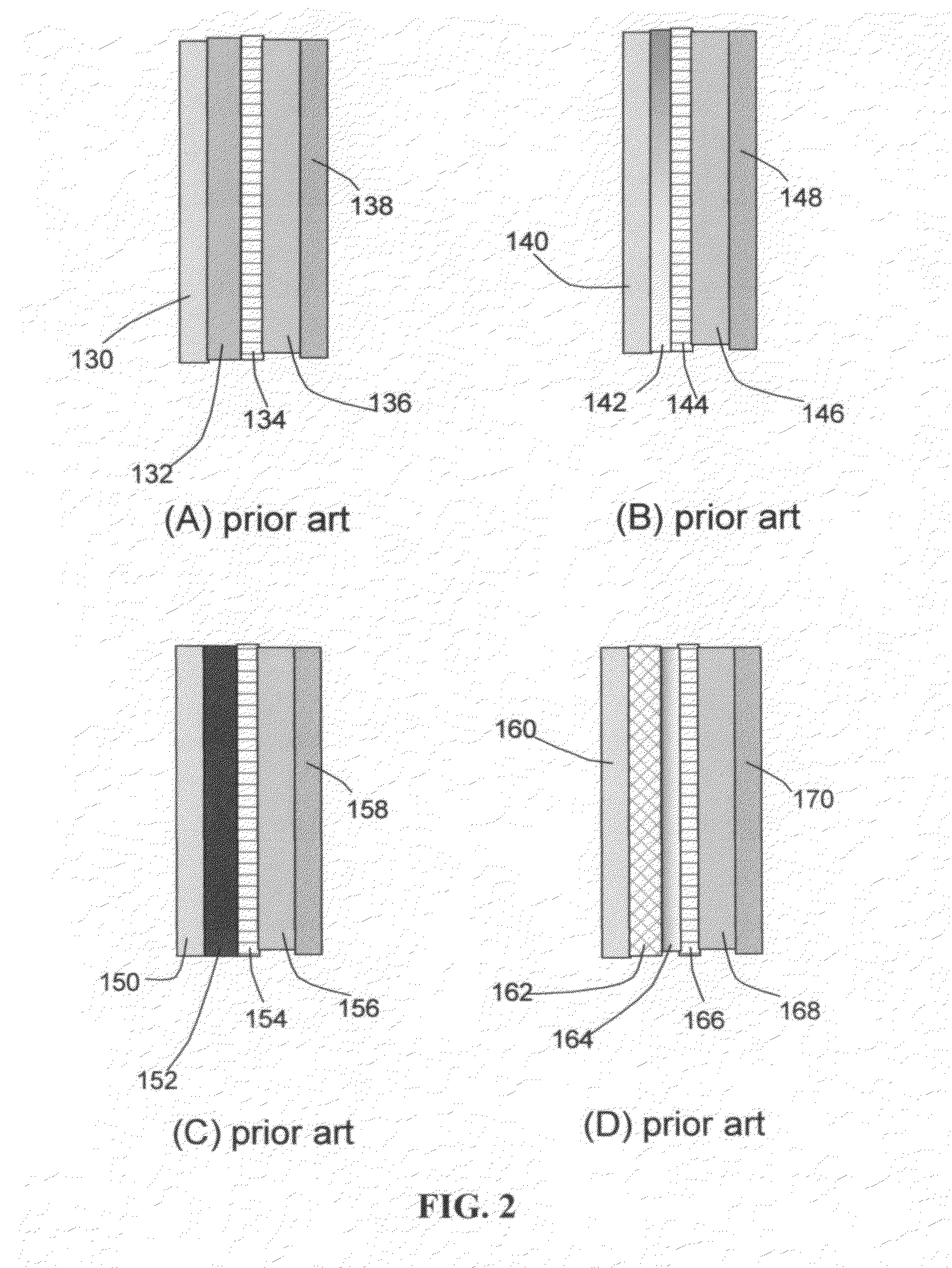Prelithiated current collector and secondary lithium cells containing same
a lithium cell and collector technology, applied in the field of prelithiated current collectors and secondary lithium cells containing same, can solve the problems of limiting the choice of cathode active materials, preventing use, and prior art materials not offering a high lithium insertion capacity, and achieve the effect of low lithium storage capacity
- Summary
- Abstract
- Description
- Claims
- Application Information
AI Technical Summary
Benefits of technology
Problems solved by technology
Method used
Image
Examples
example 1
Prelithiated Copper Foil as a Current Collector in a Lithium-Ion Cell
[0127]Three lithium-ion battery cells (coin-size full cells) were fabricated and their electrochemical performance was studied. Each cell contains a Si nanoparticle anode (Si+carbon nano-fibers or CNFs as a conductive filler) and a lithium cobalt oxide cathode. The first cell (baseline or control cell) contains a non-prelithiated copper foil anode current collector. The second cell contains a non-prelithiated copper foil anode current collector (but the anode includes some lithium powder particles mixed with Si and CNFs). These surface-stabilized lithium powder particles serve as a source of lithium ions. The third cell contains a pre-lithiated copper foil of the present invention as an anode current collector (no lithium powder).
[0128]The charge / discharge behaviors of these three cells were investigated. The discharge capacities of these three cells were summarized in FIG. 5. These data demonstrate that the presen...
example 2
Prelithiated Graphene Paper as a Current Collector
[0129]A sheet of graphene paper was prepared from chemically reduced graphene oxide supplied by Angstron Materials, Inc. (Dayton Ohio). This sheet was deposited with a mixture layer composed of approximately 80% lithium (Li) and 20% silicon (Si). This coated graphene sheet was used as a current collector in a lithium-ion cell which also contains a non-lithiated graphite anode, a separator, a non-lithiated V2O5 cathode, and a non-lithiated aluminum foil current collector at the cathode. For comparison purposes, a control cell was prepared, which contains a prelithiated graphite anode and a non-lithiated current collector at the anode side, and a non-lithiated V2O5 cathode, and a non-lithiated aluminum foil current collector at the cathode side.
[0130]FIG. 6 shows the discharge capacity of these two lithium-ion cells (coin-size full cells) as a function of the number of charge / discharge cycles. Clearly, the presently invented cell perfo...
example 3
Lithium-Ion Capacitors (Hybrid Supercapacitors)
[0131]Three lithium-ion capacitor cells (coin-size full-cell supercapacitors) were prepared and tested: one cell containing a non-prelithiated copper foil anode current collector (control) and a pre-lithiated graphite anode, the second cell containing a non-prelithiated copper foil anode current collector (but the anode including some lithium foil as a lithium ion source), and the third cell containing a pre-lithiated copper foil of the present invention as an anode current collector and a non-lithiated graphite anode (no lithium powder and no lithium foil).
[0132]The discharge capacities, based on total electrode weights, of these three cells are shown and compared in FIG. 7. The cycling stability of the cell featuring a prelithiated current collector (with an un-lithiated graphite anode) is clearly far superior to that of the control cell featuring a prelithiated graphite anode (with the anode current collector non-prelithiated). The c...
PUM
| Property | Measurement | Unit |
|---|---|---|
| thickness | aaaaa | aaaaa |
| thickness | aaaaa | aaaaa |
| mean particle size | aaaaa | aaaaa |
Abstract
Description
Claims
Application Information
 Login to View More
Login to View More - R&D
- Intellectual Property
- Life Sciences
- Materials
- Tech Scout
- Unparalleled Data Quality
- Higher Quality Content
- 60% Fewer Hallucinations
Browse by: Latest US Patents, China's latest patents, Technical Efficacy Thesaurus, Application Domain, Technology Topic, Popular Technical Reports.
© 2025 PatSnap. All rights reserved.Legal|Privacy policy|Modern Slavery Act Transparency Statement|Sitemap|About US| Contact US: help@patsnap.com



